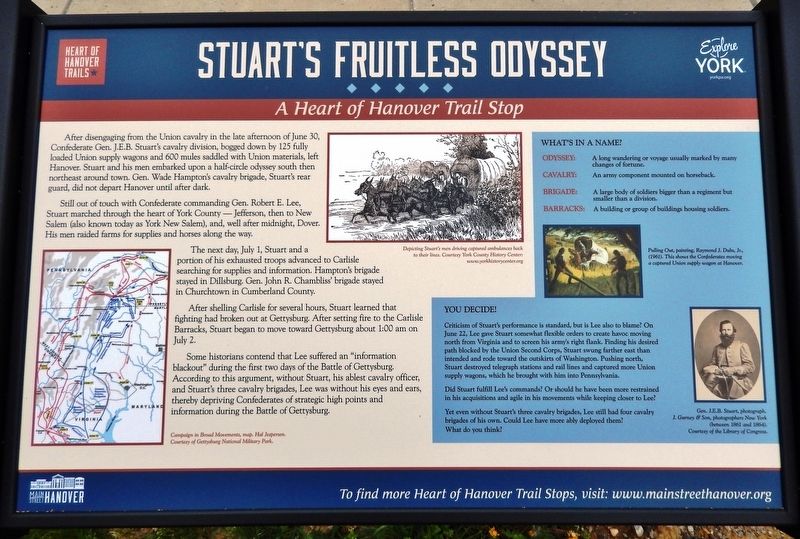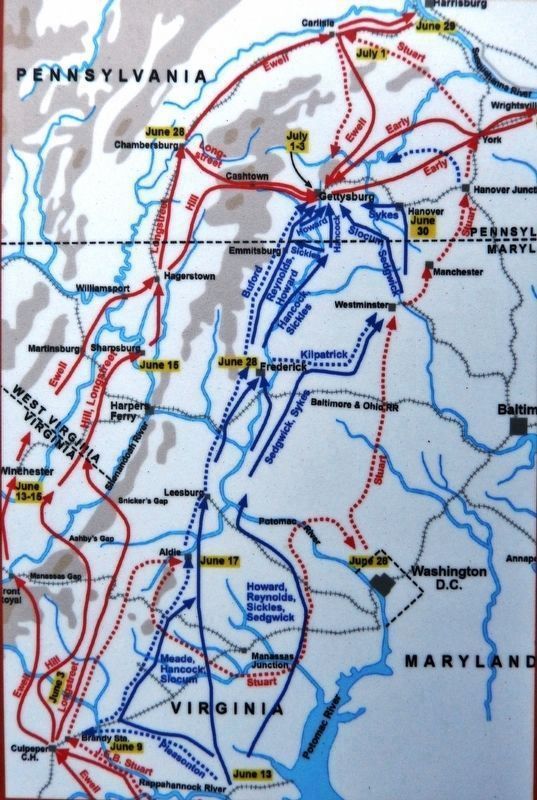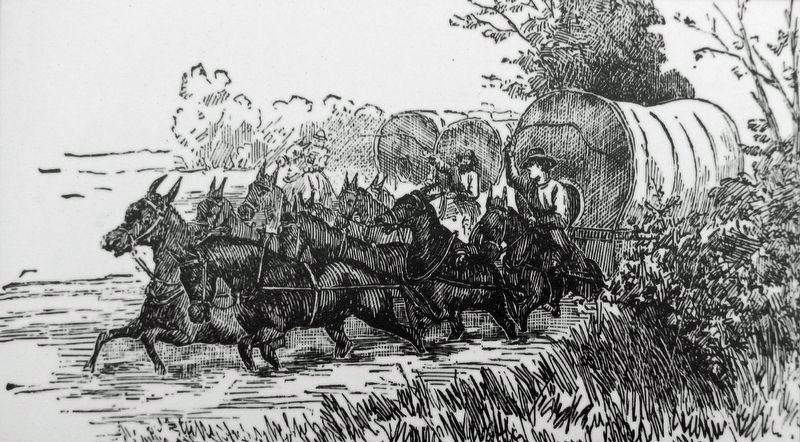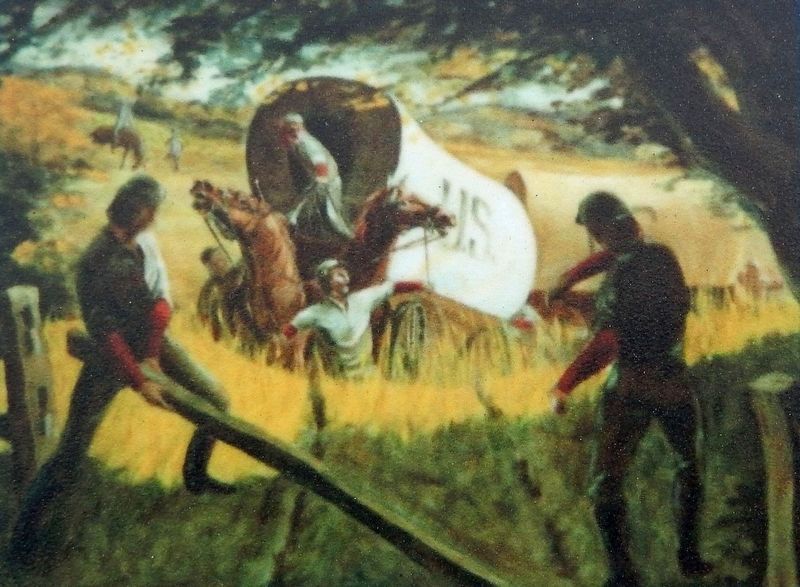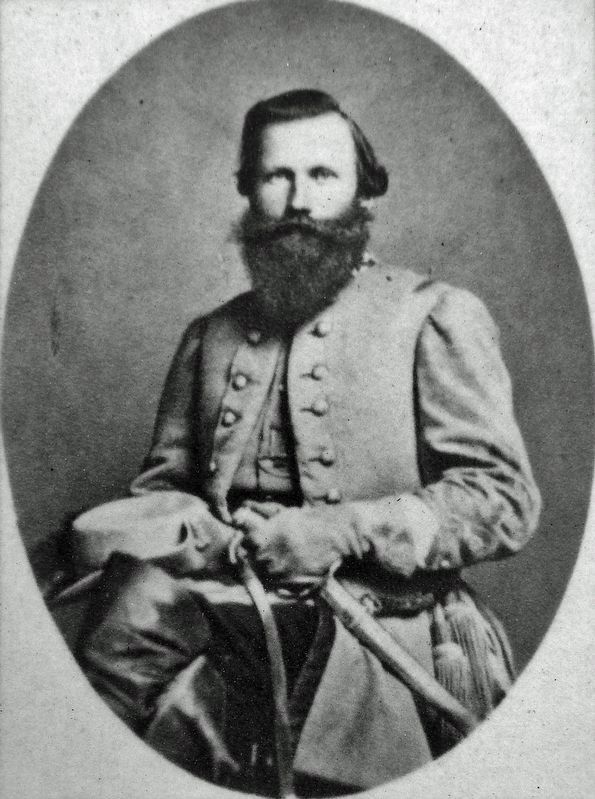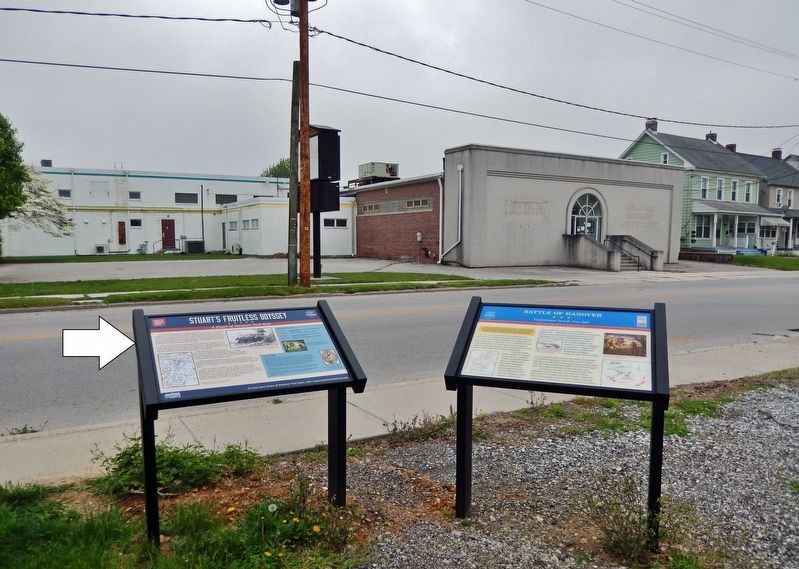Hanover in York County, Pennsylvania — The American Northeast (Mid-Atlantic)
Stuart's Fruitless Odyssey
A Heart of Hanover Trail Stop
After disengaging from the Union cavalry in the late afternoon of June 30, Confederate Gen. J.E.B. Stuart's cavalry division, bogged down by 125 fully loaded Union supply wagons and 600 mules saddled with Union materials, left Hanover. Stuart and his men embarked upon a half-circle odyssey south then northeast around town. Gen. Wade Hampton's cavalry brigade, Stuart's rear guard, did not depart Hanover until after dark.
Still out of touch with Confederate commanding Gen. Robert E. Lee, Stuart marched through the heart of York County — Jefferson, then to New Salem (also known today as York New Salem), and, well after midnight, Dover. His men raided farms for supplies and horses along the way.
The next day, July 1, Stuart and a portion of his exhausted troops advanced to Carlisle searching for supplies and information. Hampton's brigade stayed in Dillsburg. Gen. John R. Chambliss' brigade stayed in Churchtown in Cumberland County.
After shelling Carlisle for several hours, Stuart learned that fighting had broken out at Gettysburg. After setting fire to the Carlisle Barracks, Stuart began to move toward Gettysburg about 1:00 am on July 2.
Some historians contend that Lee suffered an "information blackout" during the first two days of the Battle of Gettysburg. According to this argument, without Stuart, his ablest cavalry officer, and Stuart's three cavalry brigades, Lee was without his eyes and ears, thereby depriving Confederates of strategic high points and information during the Battle of Gettysburg.
What’s in a Name?
Odyssey: A long wandering or voyage usually marked by many changes of fortune.
Cavalry: An army component mounted on horseback.
Brigade: A large body of soldiers bigger than a regiment but smaller than a division.
Barracks: A building or group of buildings housing soldiers.
You Decide!
Criticism of Stuart's performance is standard, but is Lee also to blame? On June 22, Lee gave Stuart somewhat flexible orders to create havoc moving north from Virginia and to screen his army's right flank. Finding his desired path blocked by the Union Second Corps, Stuart swung farther east than intended and rode toward the outskirts of Washington. Pushing north, Stuart destroyed telegraph stations and rail lines and captured more Union supply wagons, which he brought with him into Pennsylvania.
Did Stuart fulfill Lee's commands? Or should he have been more restrained in his acquisitions and agile in his movements while keeping closer to Lee?
Yet even without Stuart's three cavalry brigades, Lee still had four cavalry brigades of his own. Could Lee have more ably
deployed them? What do you think?
Erected 2022 by Main Street Hanover; and Heart of Hanover Trails.
Topics and series. This historical marker is listed in this topic list: War, US Civil. In addition, it is included in the Pennsylvania, Battle of Hanover Walking Tour series list. A significant historical date for this entry is June 30, 1863.
Location. 39° 47.6′ N, 76° 59.497′ W. Marker is in Hanover, Pennsylvania, in York County. Marker is on Frederick Street (Pennsylvania Route 194) just south of Stuart Avenue, on the right when traveling south. Touch for map. Marker is at or near this postal address: 513 Frederick Street, Hanover PA 17331, United States of America. Touch for directions.
Other nearby markers. At least 8 other markers are within walking distance of this marker. Battle of Hanover (here, next to this marker); The Confederates Invade Pennsylvania (a few steps from this marker); Gettysburg Campaign (a few steps from this marker); J.E.B. Stuart's Jump (within shouting distance of this marker); Hanover (about 600 feet away, measured in a direct line); The Forney Farms (approx. ¼ mile away); Heroics of the Union Cavalry (approx. ¼ mile away); The Center of the Storm (approx. ¼ mile away). Touch for a list and map of all markers in Hanover.
Related markers. Click here for a list of markers that are related to this marker. Heart of Hanover Trail
Also see . . . Battle of Hanover
.
There is no question that Stuart’s absence during the Confederate approach to Gettysburg lessened Lee’s chances of success. Without his ‘eyes and ears,’ Lee was advancing blindly into enemy territory. Mosby’s outdated information about the Army of the Potomac’s being inactive certainly did not help Stuart, but the captured wagon train proved to be his Achilles’ heel. In his official report, Stuart admitted that the wagon train ‘was now a subject of serious embarrassment.’ Some of Stuart’s own men condemned the entire expedition as a misguided attempt to ‘do some great thing.’(Submitted on May 7, 2022, by Cosmos Mariner of Cape Canaveral, Florida.)
Credits. This page was last revised on May 8, 2022. It was originally submitted on May 5, 2022, by Cosmos Mariner of Cape Canaveral, Florida. This page has been viewed 170 times since then and 19 times this year. Photos: 1. submitted on May 6, 2022, by Cosmos Mariner of Cape Canaveral, Florida. 2, 3, 4, 5, 6. submitted on May 7, 2022, by Cosmos Mariner of Cape Canaveral, Florida.
